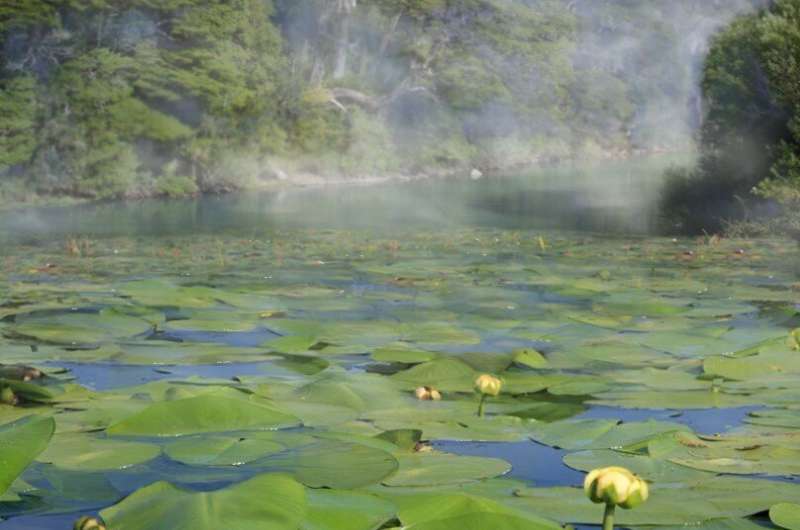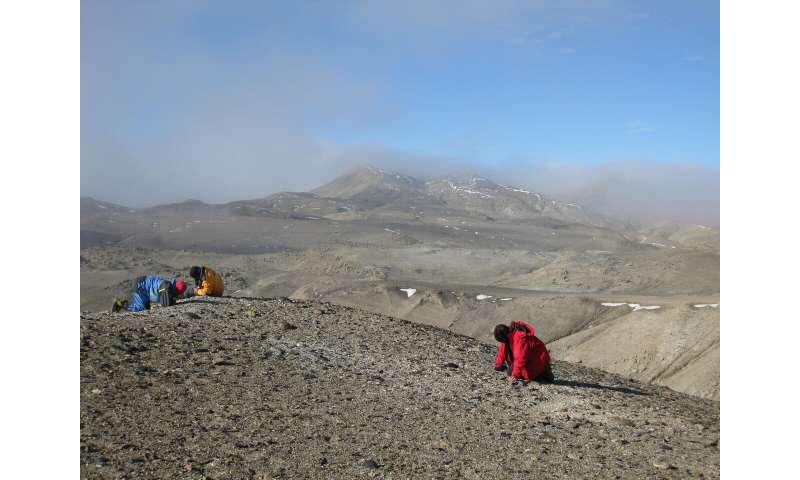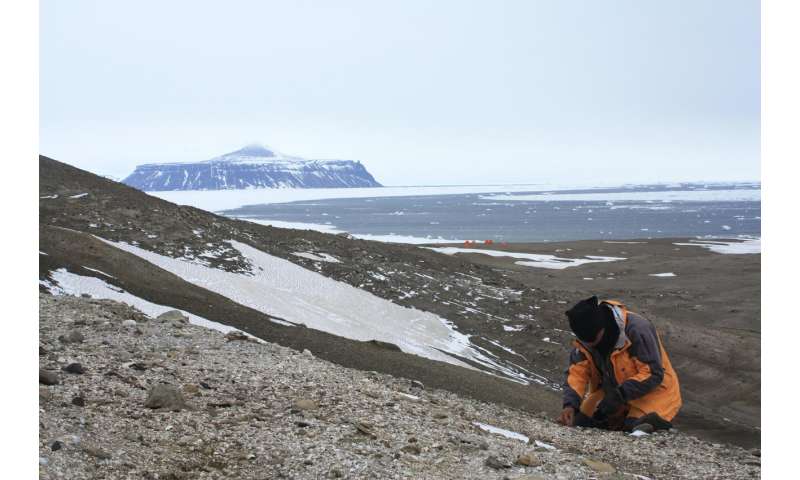Fossil frogs offer insights into ancient Antarctica

The discovery of the earliest known modern amphibians in Antarctica provides further evidence of a warm and temperate climate in the Antarctic Peninsula before its separation from the southern supercontinent, Gondwana. The fossils, which belong to the family of helmeted frogs, are described in Scientific Reports this week.
Thomas Mörs and colleagues discovered the fossilized remains of a hip bone and ornamented skull bone during expeditions to Seymour Island, Antarctica Peninsula, between 2011 and 2013. The specimens are approximately 40 million years old and from the Eocene period, and both belong to the Calyptocephalellidae family, also known as helmeted frogs. No traces of cold-blooded amphibians or reptiles from families still in existence had been found to date in Antarctica.
Previous evidence suggests that ice sheets formed across the Antarctic Peninsula before the final break-up of the southern supercontinent Gondwana into continents of the present-day Southern Hemisphere, including South America and Antarctica. The new discovery suggests that the climatic conditions of the Antarctic Peninsula during the late middle Eocene may have been comparable with the humid and temperate climate in the forests of South America today, where all five living species of helmeted frog are exclusively found.
The findings indicate that the forests of South America may be a modern analogue of the Antarctic climate just prior to the glaciation of the southern continent and may now be home to species originally found across the Antarctic Peninsula.
-

Palaeontologists at the frog site on Seymour Island. Credit: Federico Degrange, Centro de Investigaciones en Ciencias de la Tierra and Jonas Hagström, Swedish Museum of Natural History. -

Palaeontologists at the frog site on Seymour Island. Credit: Federico Degrange, Centro de Investigaciones en Ciencias de la Tierra and Jonas Hagström, Swedish Museum of Natural History.
More information: First fossil frog from Antarctica: implications for Eocene high latitude climate conditions and Gondwanan cosmopolitanism of Australobatrachia, Scientific Reports (2020). DOI: 10.1038/s41598-020-61973-5
Journal information: Scientific Reports
Provided by Nature Publishing Group





















